|
Back to Subfamily Keys |
|||
| 1 | Petiole is reduced to a simple, flattened strip when seen in profile, never with a standing scale or node; the length of the propodeal dorsum is much shorter than the propodeal declivity; the first gastral segment projects over the petiole, and the petiole not usually visible from above when thorax and gaster are in the same plane (fig. 1) |
||
Petiole has a node or scale when seen in profile, node may be high and erect, or lower and inclined forward, but it is always present and noticeable; gaster may or may not project over the petiole (fig. 2) |
|||
  |
|||
Only 4 gastral tergites visible in dorsal view, the fifth tergite is reflexed below the the fourth and is visible in ventral view, anal and associated orifices are directed ventrally fig. 3); no erect hairs present on dorsum of mesosoma (fig. 4); concolorous dark brown to blackish brown or with gaster, legs, and antennae also brownish colored(fig. 5) |
...Tapinoma |
||
Five gastral tergites visible in dorsal view, anal and associated orifices are directed apically (fig. 6); erect hairs present on dorsum of mesosoma (fig. 7); body dark brownish black to black except for tarsi and funicular segments yellowish white (fig. 8) |
|||
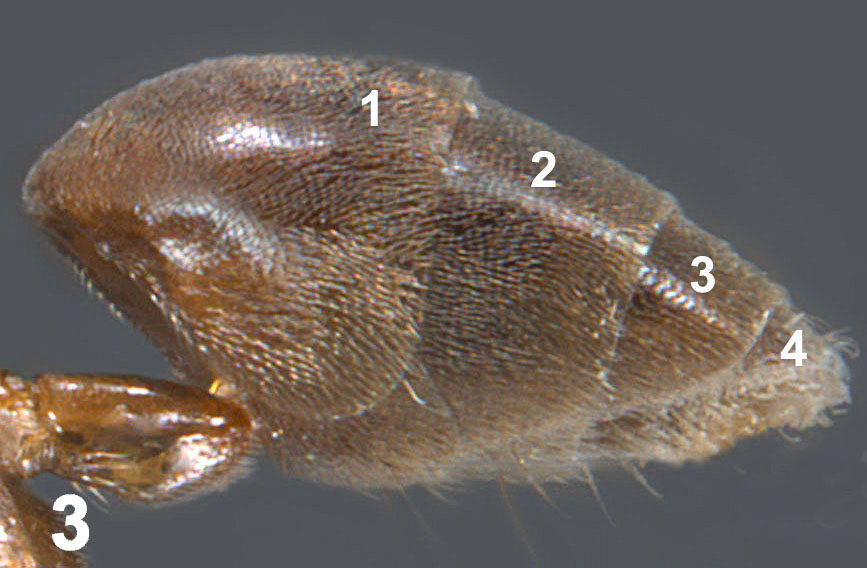   |
|||
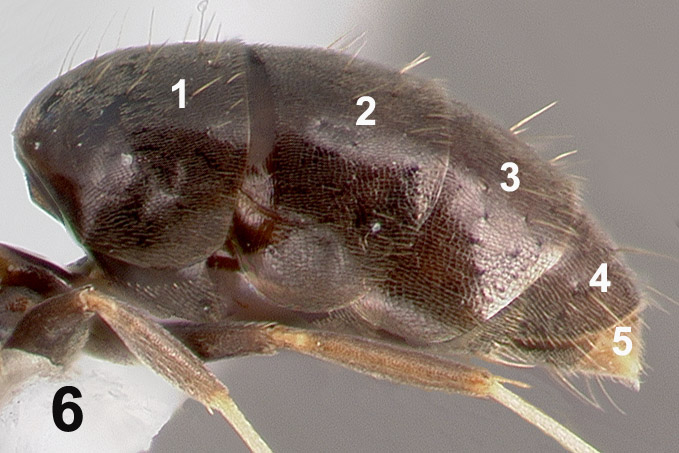   |
|||
| 3(1) | ...Dolichoderus |
||
The integument thin, weakly sculptured, but can be dense; no foveolate punctures on head; no tooth-like prominence on hypostoma, propodeal declivity not concave (fig. 10) |
...4 |
||
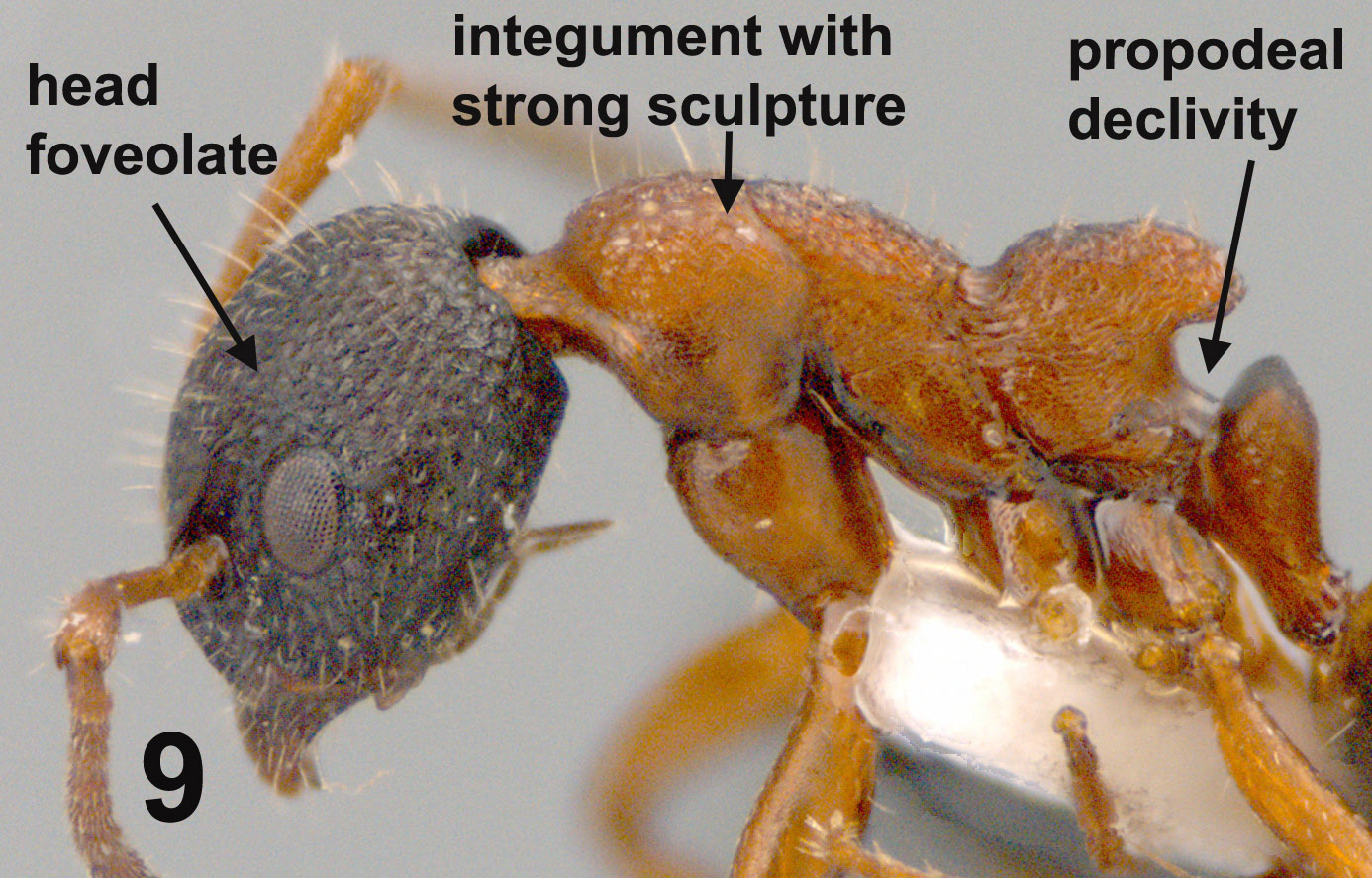 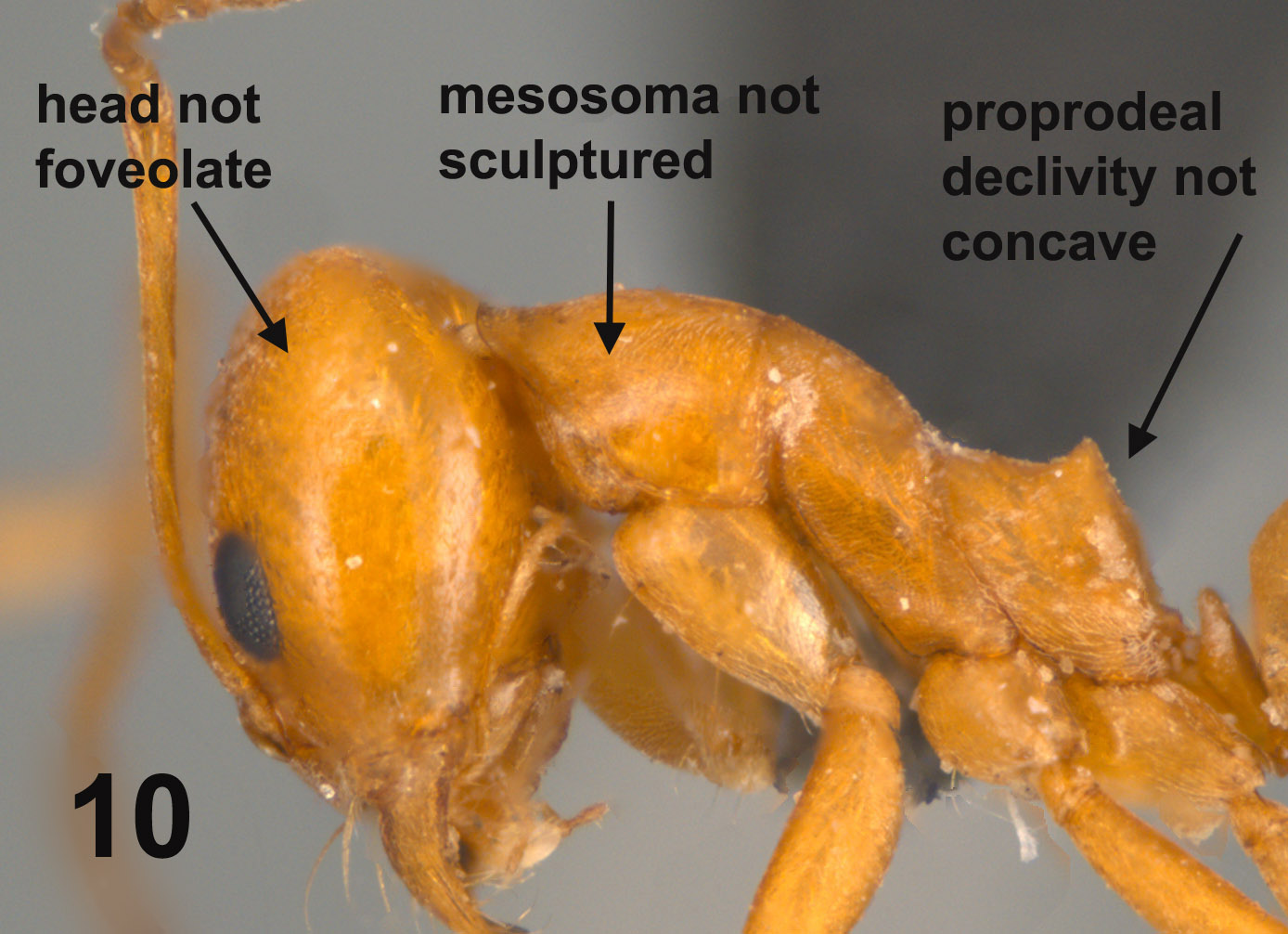 |
|||
| 4(3) | In profile, propodeum has a single raised tooth or spine extending from the angle between the dorsum and the declivity (fig. 11) |
||
In profile, propodeum may be angular, but never extending into a tooth or spine (fig.12 ) |
...5 |
||
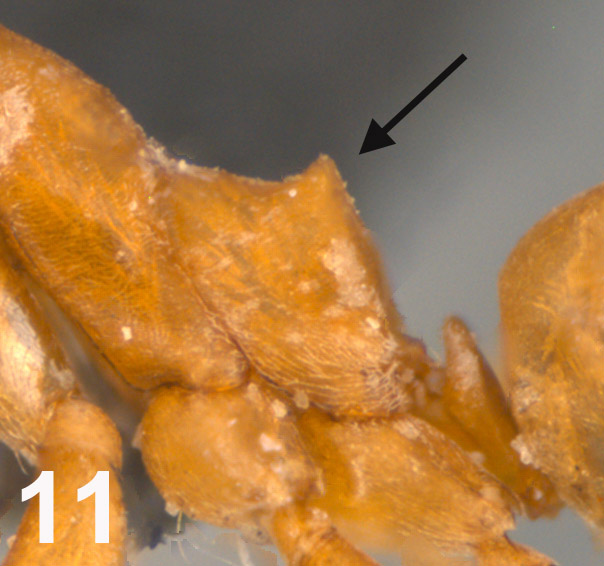 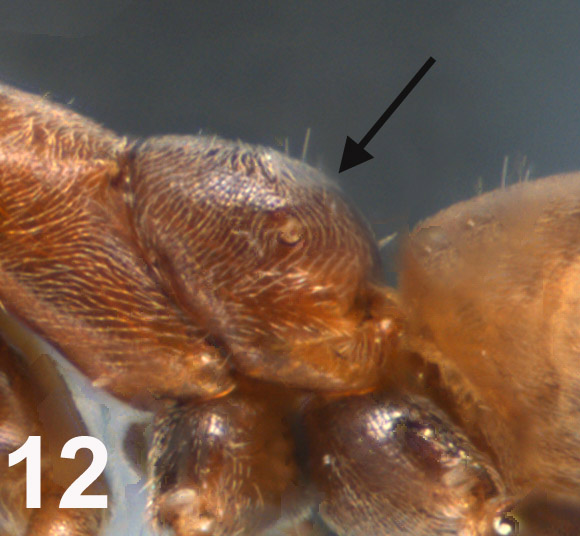 |
|||
| 5(4) | The anterior clypeal margin has 2-12 ventrally curved setae that are about the same length as the closed mandibles (fig. 13); basal margin of the mandible unarmed; the first gastral segment projects over the petiole (fig. 14) |
...Forelius |
|
The anterior clypeal margin with 2-6 setae that are much shorter than the closed mandibles (fig. 15); basal margin of the mandible has denticles close to the basal angle; the first segment of the gaster is vertical in orientation and does not project over the petiole (fig. 16) |
|||
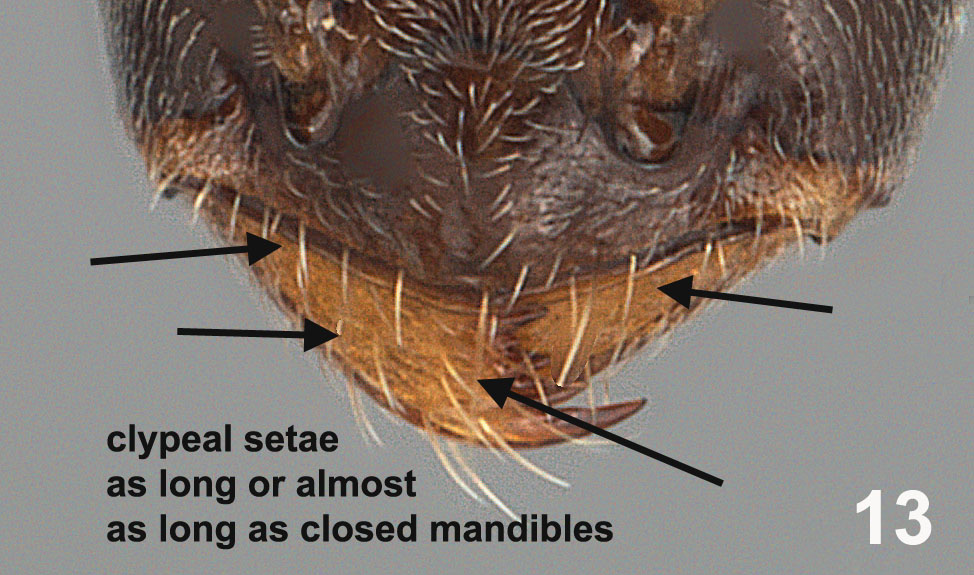 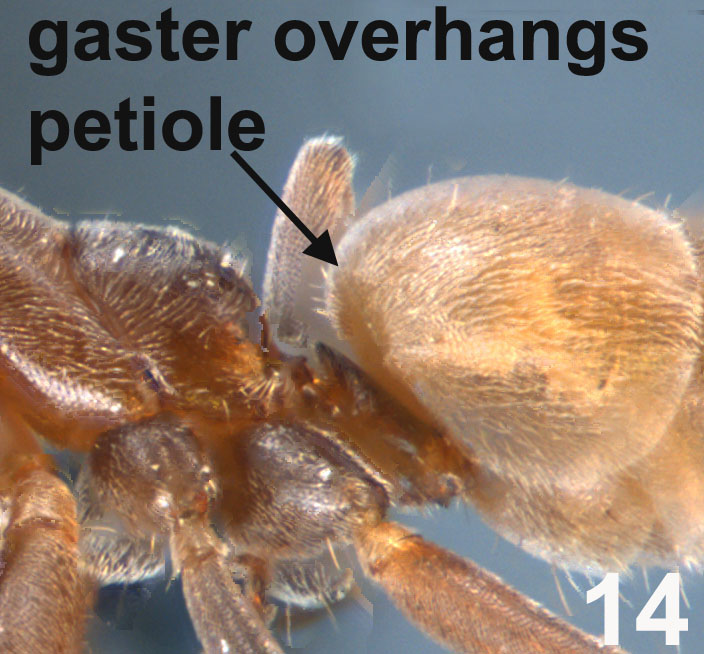 |
|||
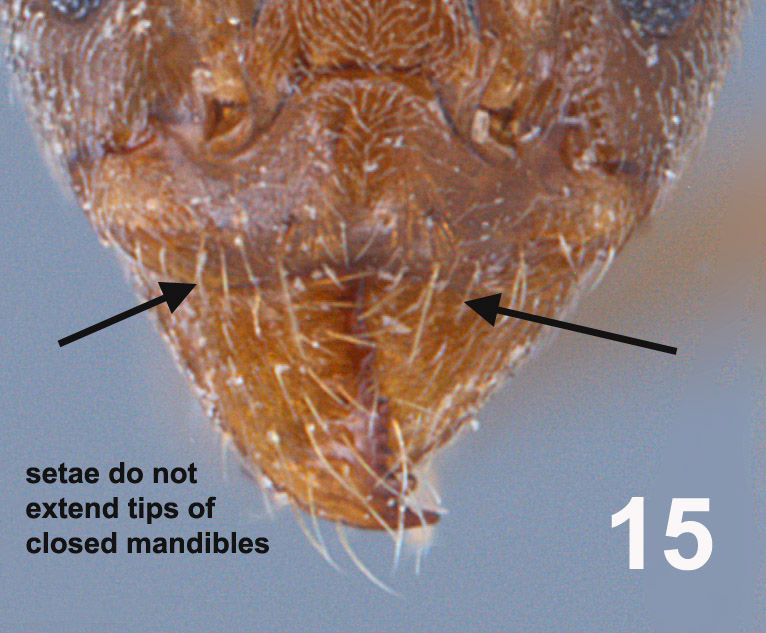 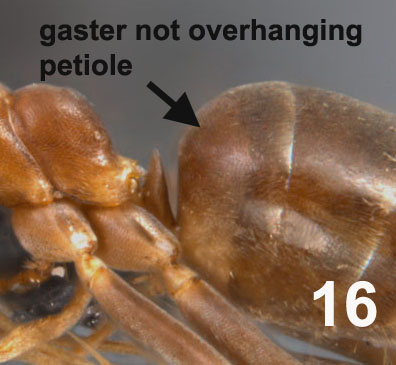 |
|||


